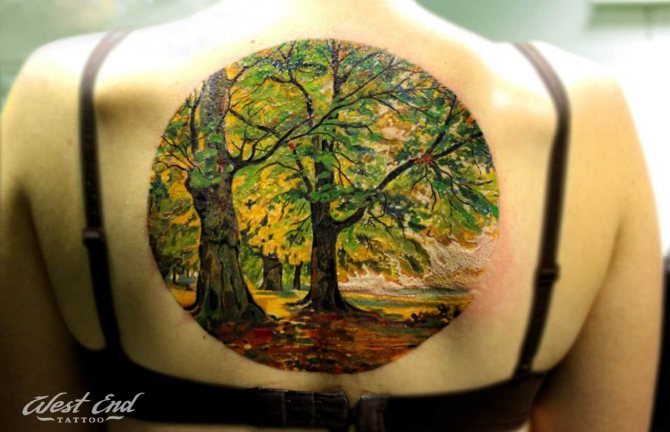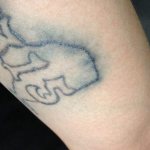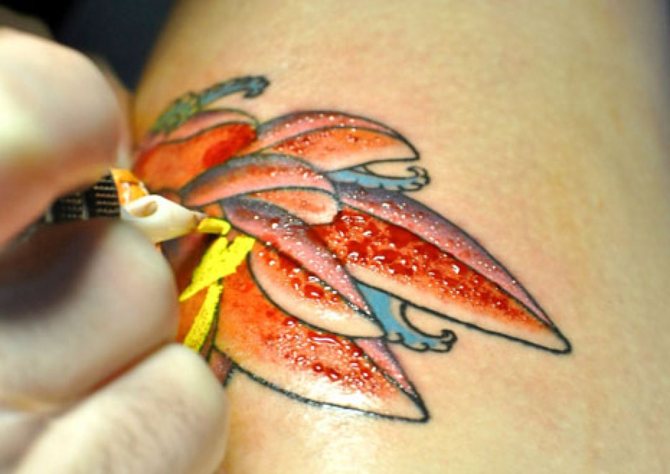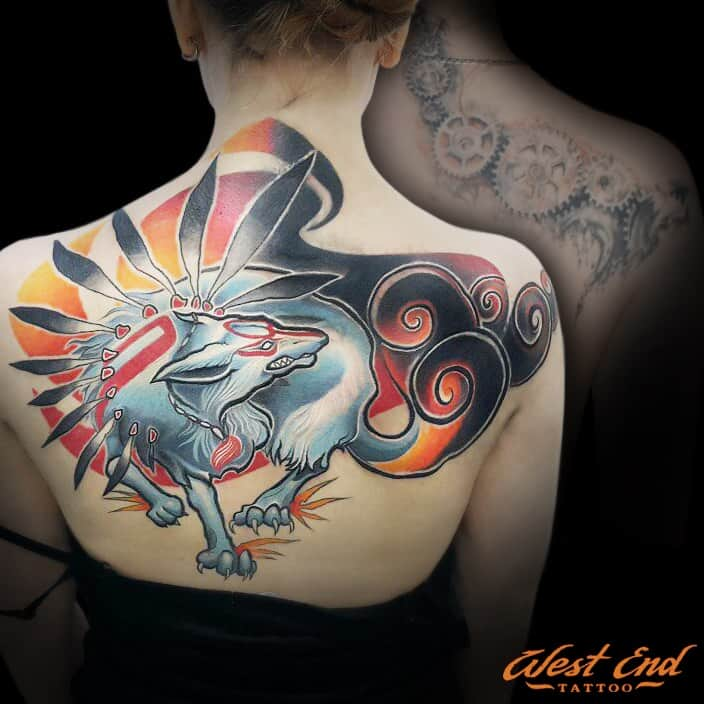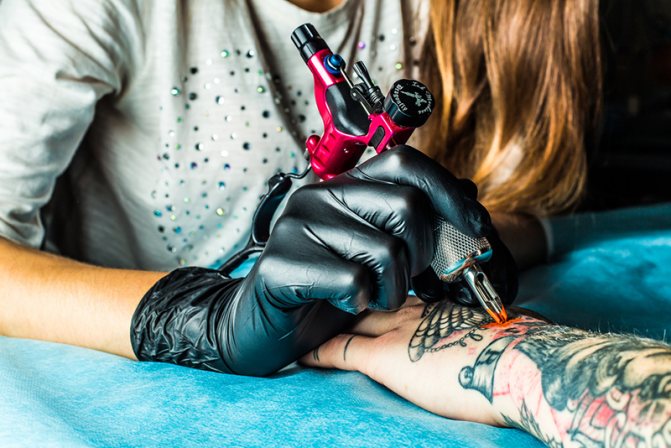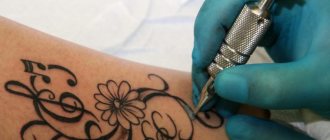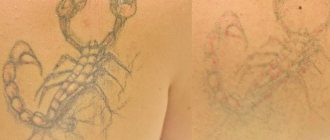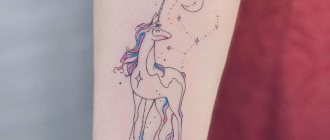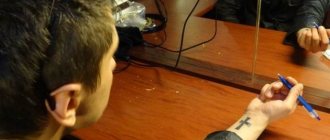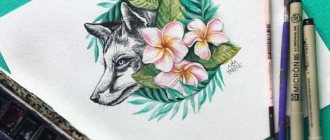Why the tattoo has floated up and what to do if it does not happen...
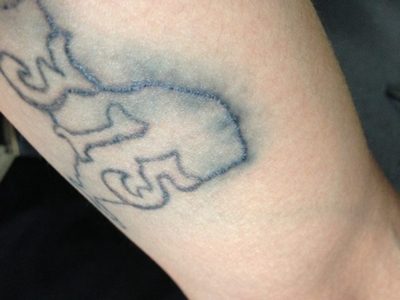
Floating tattoos can please only detractors. For the same owner of the figure such a result promises only negative reactions. Indeed, if the tattoo has floated, the clarity and beauty it no longer features. The joy of such a drawing will not be. Immediately it is worth noting that if the tattoo has floated away in the first days after the procedure, then immediately sound the alarm does not cost. There is a high probability that after exfoliating the dead layer you will not see the floating tattoo. If even after the peeling of the skin will be observed floating contours of the tattoo, then, unfortunately, this sad fate has overtaken you.
Why did the tattoo float?
- Features of the skin. Each person, or rather each person's skin, has its own characteristics. Some have thinner skin, some have thicker skin, and the floated tattoos are most often observed on thin skin.
- Improper application technique. If the tattoo is scored too deeply, it is bound to float.
- Improperly chosen size. Choosing a sketch with fine detail is a direct path to a floating tattoo. If not immediately, it will happen after some time.
- Using pigment that is not designed for contouring.
What to do so that the tattoo does not float
In order not to have to think about what to do if the tattoo floated, it is necessary still on the preparatory stage to puzzle over this issue. But it is worth understanding that following these recommendations will not give a one hundred percent guarantee that the tattoo will not float, but only minimize it.
- Choosing a master. Look for an experienced performer with a rich portfolio and positive reviews. The probability that this specialist will make any mistakes is small. In addition will be able to professionally advise you and keep from making rash steps.
- Choice of the sketch. Avoid sketches with fine detail. These tattoos are almost always floating. If you listened to past advice and found an experienced master, he will also warn you about this outcome.

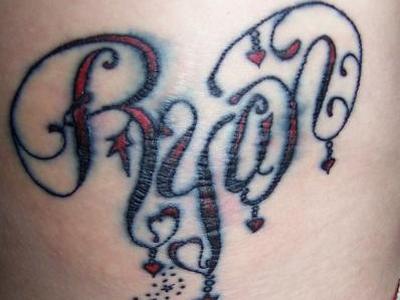
- Care. Follow all the recommendations of your tattoo master. A negligent attitude to the stage of healing of the skin can bring not a few problems, including in the form of a floating tattoo. Here you are to blame for these unfortunate results.
What to do if the tattoo has floated away
Wait for the tattoo to fully heal. It is not uncommon to find that after exfoliating the dead skin, the floating contours of the tattoo are not there at all. If all the same tattoo has floated and you are not satisfied with it completely, you can do the following:
- Correction. Address to the master (other expert if you don't trust yours) that it has corrected the floating contours of a tattoo. It is not uncommon to go around the contours with white pigment. The use of such color allows to remove the formed "undercurrents" and to allocate visually a tattoo. Such variant looks very nice.
- Overlay. Sufficiently cardinal decision, but there are cases when it is simply impossible to perform the correction (for example, because of the fine detail of the sketch.) In this case, the populated tattoos overlap with new ones.
- Removal. Quite a cardinal variant. But it also happens that after the failed experience, the desire to have a body drawing at all disappears. In this case, the floating tattoo is removed.
After a week or two.


Approximately 2 weeks after a tattoo is applied, a veto on water procedures is removed. But with pool all the same be careful - strongly chlorinated water damages brightness of tattoo. Just in case before you get into the water, apply a thick layer of vaseline to the tattoo.
If the crusts fell off and everything seems to have healed, but you see that the color is uneven, make an appointment for tattoo correction. The master will paint over all the light spots. It's better to do it right now - with time tattoo slightly changes color, and if you go to the salon in a couple of years, will have to work through not individual light spots, and the whole tattoo. Otherwise, the design will be blotchy.
When will the blue streaks under the skin from the tattoo come off?
I got a tattoo in early April and blue streaks appeared in some places near the outlines. When I was at the correction, the master said that should come down, and now it's the end of May, and they not only do not come down, so also in some places there are new ones. Not catastrophic of course, but it does not look aesthetic, and spoil the look of the tattoo. The tattoo itself has not deteriorated. Place: my thigh. If they still don't come off by themselves, and the master roughly speaking "fucked up" me, then how can they be removed? Maybe a tan? And is it possible to remove these divorces by laser or only the whole tattoo? The length of the tattoo is 21 cm, the width is 9 cm.
Well, you can see that you did it with a cheap crooked hand, you can't afford to save on tattoos. If you decide to do - go to a good master, but it will come out in a tidy sum. Not all people understand how much a quality tattoo costs. And the divorce will not go away, of course, how can they? Bullshit.
This is the fault of the master. Not deep enough hammered the paint under the skin, so it floated.Correction by a normal master will help you
Oh, either the artist screwed up or didn't take good care of the tattoo. Go for a consultation with another artist. I did the last week ago, there are two more, there has never been a divorce.
For the Woman.ru Forum version of the computers there are new features and design. Tell us, what are your impressions of the changes?
In the early days.


From now on your whole life is a struggle with the formation of dry crust on the tattoo. It will appear anyway, but it's a good idea to keep it moisturized at all times. Otherwise it will start to fall off in pieces together with the paint, and when it heals, you will find your tattoo spills. 2-3 times a day very carefully (just WARNING) wash your tattoo with warm water and a drop of antibacterial soap (to wash off the lymph), wait until it dries itself and lubricate with ointment like "Bepanten" or "D-Panthenol".
You shouldn't be sweating. You can do whatever you want. But in the first few days, you can't do sports, let alone baths, saunas, or beaches. Yes, life will lose its colors. But the tattoo will retain it.
In three or four days, the tattoo will start to itch. It's okay, you didn't get rabies, that's how it heals. Don't you dare scratch it, even if you really want to. Some people say you can trick your brain for a while by scratching somewhere other than where it itches. Sometimes that helps.
Why did your tattoo float?
You may have seen this kind of thing in others or this kind of trouble happened to you. Dilution around the outline of the tattoo or slightly outside of it. It looks very much like a bruise, but it is not.
In English - it is called "Tattoo BlowOut", a direct translation of "tear" or "puncture". If you translate it "by meaning" you get something like "the tattoo blows out". It looks a lot like a smudged mark from a fountain pen. It looks like the picture below.
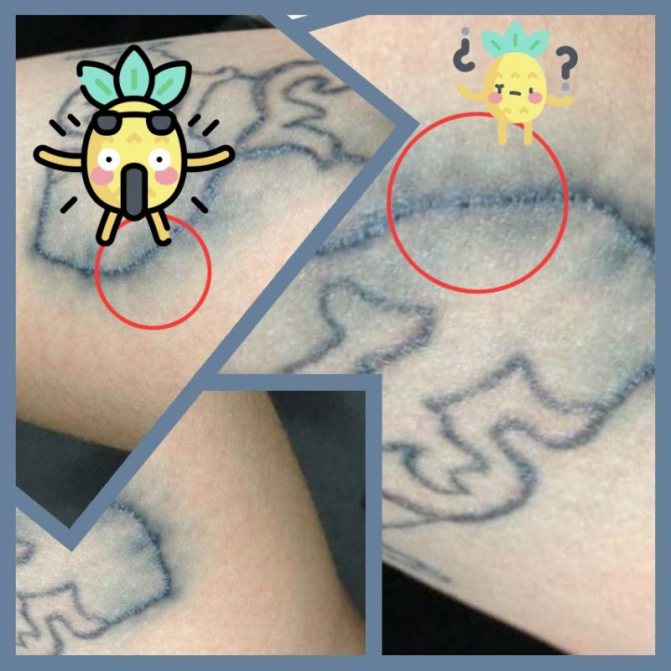

Examples of tattoos that have melted, after a session.
The first thing that comes to mind is, "Who's to blame and what to do?" Let's go in order. Most likely, the tattoo artist is to blame. More often than not, the main mistake is the inexperience of the master.
Depth of pigment application. The master misuses the machine and brings the ink into deeper layers of the skin than required. The difference in pressure and cell structure in this layer causes the ink to disperse in unpredictable ways.
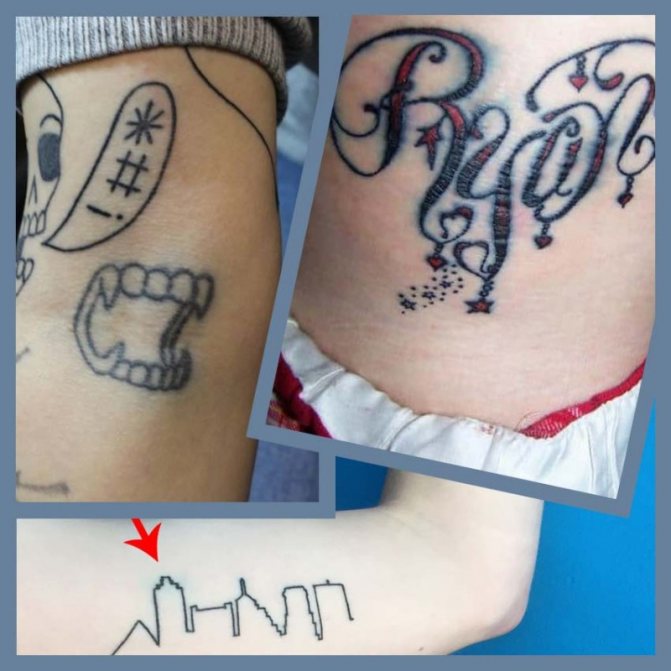

An example of a blurred hand tattoo.
In addition to the applied force, the angle at which the artist holds the machine is also important.
Sometimes, it can take up to several weeks before you see this blurring.
Paint, Needles, Machine. All of these can also be the cause. The induction machine is usually used to shape the outline of the tattoo. A rotary is for filling it in. Cheap needles, poor quality Chinese paints are a great way to save money. And it's also the shortest way to get "partak."
Improper care .. Not following care requirements is an appropriate solution for someone who doesn't care about the quality of their tattoos. Rubbing fresh work with a washcloth, taking a walk in the scorching sun. Ignore the use of a regenerating ointment. These are all great ways to get a blurry outline.
Very thin skin.. A person's skin is not evenly distributed. The thinner the skin, the more likely it is to be ejected. Thus, certain parts of the body are more prone to a blurred tattoo. These are the wrist, ankles, fingers and hands. Slightly less often, ejections are obtained in the joint area, such as the back of the knee or elbow.
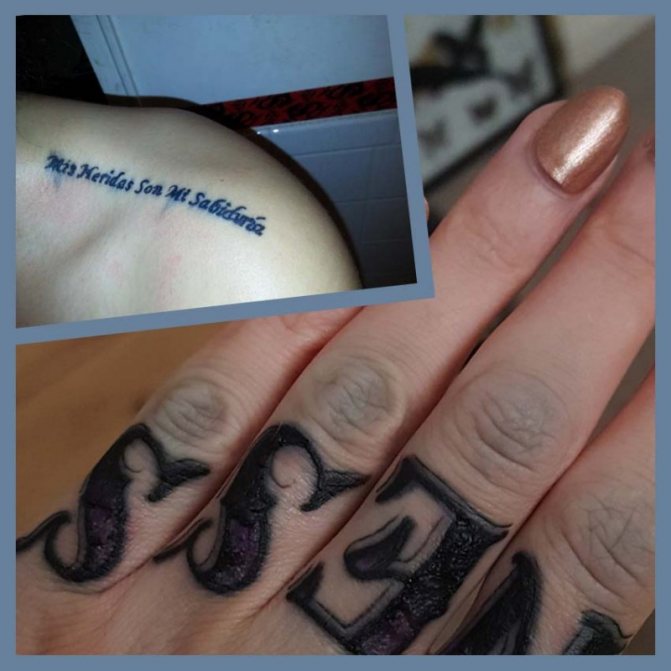

Examples of tattoos that have blurred on the fingers.
Skin tension during the session.. When the craftsman lightly pulls on your skin, it's common. But, applying too much force will also result in unwanted ink release.
Before the session
The care of a tattoo begins, oddly enough, even before it appears. After all, it is an intervention, which means that it is necessary to act comprehensively.
Tattoo artist Ivan Tahin warns that the master must be chosen carefully. After all, the quality of work and, consequently, the process of healing of the image also depend on the professionalism of the author. We advise to study not only the freshly made tattoos, but also those that have already "seen life". So you can understand how good the master is. This is an important stage of preparation. In addition, there are places where it is more difficult to take care of a tattoo. For example, the hands, palms, fingers, bends of the arms and legs. The care itself is not different, but it's just worth being prepared for.
We talked to tattoo artist David (better known in social networks as POXYC - his Instagram is followed by more than 17 thousand followers).
View on Instagram
Three days before the session, you should not drink alcohol or use illegal substances. The fact is that alcoholic beverages have a negative effect on blood processes. The blood liquefies. If this rule is neglected, the tattoo can "float" and heal longer than it should. In addition, during the drawing bleeding will be more abundant, which will complicate the work of the master and dilute the ink.
"There is also a belief that you should not drink coffee before a session either, as it raises blood pressure and supposedly because of this will secrete a lot of bloodstream. In fact, there is just as much caffeine in tea, so in fact, you shouldn't drink tea either. But in reality in three years of tattooing I have not noticed any difference. Other than that, a lot of tattoo studios have tea and coffee and stuff like that. So feel free to grab two mugs of cappuccino and go to your session (the other mug is for your master)," David says.
You can't use skin anesthesia. The point is that the skin "hardens", because of this it is worse for the ink to be hammered in. Accordingly, the tattoo will take longer to heal. After the anesthesia subsides, the body is literally shocked by the "novelty" - a foreign body in the form of a tattoo. He did not feel the place for the last hour (if not more), and when he felt it, he discovered the intervention.
About a week in advance, start smearing the place of the future tattoo with moisturizing cream. "The main thing is not to puncture and understand in advance, on what place will be located the tattoo. Otherwise it will turn out that you have a week to smear a leg, and in the end hit on the hand, "- laughs David. It's really better to figure this out well in advance.
Darphin, 549 rubles at goldapple.ru
Dermalogica, 6664 rubles at lookfantastic.ru
CeraVe, 1714 rubles at iherb.com
Contraindications For tattoos there are also contraindications. It is better to find out in advance if you are allergic to the paint. A medical specialist can help with this.
"Most often an allergic reaction occurs to red or ultraviolet pigment," specifies the master.
You shouldn't get a tattoo if you are: epileptic, mentally ill, if you are pregnant or lactating woman, well or a minor.
Process of tattoo healing
- The first stage (Day 1-6) - from the tattoo oozes fluid, there is a slight swelling and redness around the tattoo, which become less and less every day.
- The second stage (Day 7-14) - the itching and exfoliation of the dead skin begins. This stage continues until all the dead skin particles are exfoliated off.
- Stage Three (Day 15-30) - The tattoo looks completely healed, but is a little cloudy for a week. The lower layers of skin are still healing, so do not stop intensive tattoo care.


Stages of proper tattoo healing
Conventionally, the following stages can be distinguished (all terms are named approximately, as they depend on the individual features of the skin and the place where the drawing is applied):
- Within two days after the session, there is slight swelling and fluid in the traumatized area, which may be colorless or pigmented.
- In 5-10 days after the tattoo begins to heal, the swelling disappears, the skin dries out and the injured area is very itchy. During this period, care should be taken to ensure that the traumatized area is not subjected to mechanical impact.
Injured skin in areas of the body with a lot of subcutaneous fat will take about 7-10 days to heal. In areas with little subcutaneous fat (ankle, wrist, ribs) the tattoo healing period is up to two weeks. In order to apply a large-sized subject, several sessions are required. The healing process of the tattoo in this case can last a month or even more. If the tattoo requires correction and it is carried out by a master, the terms of epithelium restoration in this area increase. This often happens when the client has decided to tattoo a sleeve and the tattoo area is large enough.
It is considered that the tattoo is healed, if on this area peeling has completely stopped, dryness and shine have disappeared. Full recovery of the epithelium occurs in 3-5 weeks. After this period, you can cancel all restrictions and stop using special skin care products.
